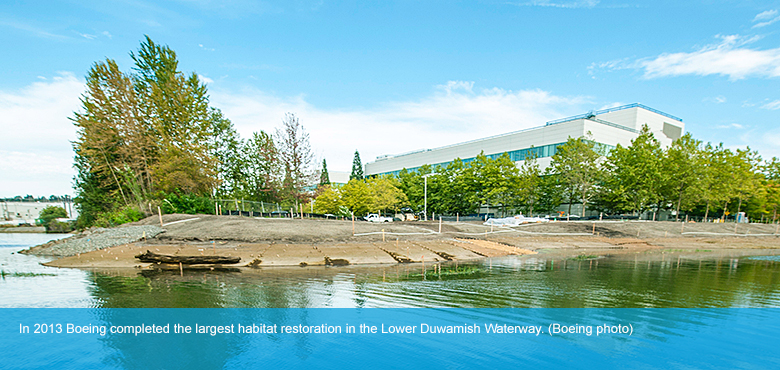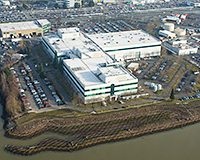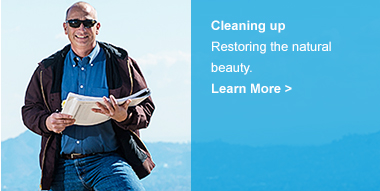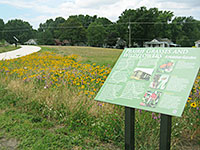Innovating
to Zero
Remediation

A key tenet of Boeing's remediation program is the invaluable input from community members and environmental groups. This, coupled with the guidance of leading environmental scientists and direction by federal and state regulatory agencies, has led to great progress in cleaning up sites to ensure the protection of human health and the environment. Remediation activities are largely performed at sites that have been affected by past manufacturing activity and facilities where Boeing, or acquired companies, shipped chemicals or other wastes for treatment, storage or disposal. Comprehensive solutions oftentimes involve innovative cleanup methods and sustainable remediation practices.
Duwamish Waterway
In 2013, Boeing completed the largest habitat restoration in the Lower Duwamish Waterway, transforming nearly one mile (1.6 kilometers) of former industrial waterfront into a wetland resource that improves Puget Sound salmon runs. From tufted hairgrass and bulrush to willows and bigleaf maple, more than 170,000 native plants now occupy five acres (two hectares) along the water’s edge.
Boeing is part of the Lower Duwamish Waterway Group along with the City of Seattle, Port of Seattle and King County, which are the four parties that have been leading the cleanup of a five-mile stretch of industrial waterway south of downtown Seattle. A decision on the cleanup plan for the Lower Duwamish Waterway Superfund site is expected from the EPA in late 2014.
In the meantime, Boeing has made significant progress with its “early action” cleanup work to remove contaminated sediment and restore the waterway bed with clean sand near the former Plant 2 site. The collective early action efforts of the Lower Duwamish Waterway Group will reduce contaminant risks in the sediment by half.
Boeing plans to remove 165,000 cubic yards (125,400 cubic meters) of sediment and replace it with clean sand by 2015. After the first two dredging seasons in 2013 and 2014, Boeing is halfway toward this goal with the removal of 82,000 cubic yards (63,460 cubic meters) of sediment, which is enough to fill 1,100 railcars. Boeing also installed a state-of-the-art treatment system to clean 9.3 million gallons (35 million liters) of water that was removed with the sediment during the second season of dredging in early 2014.
Santa Susana
A former federal government rocket engine test and energy research facility located northwest of Los Angeles, the Santa Susana Field Laboratory has a rich history of contributions to the U.S. space program. It sits within a vital habitat linkage between Southern California’s inland and coastal mountain ranges and is home to rare and protected plants and wildlife. Since acquiring its portion of the site in 1996, Boeing has made significant progress toward cleanup and restoration, and is moving toward the goal of preserving Santa Susana as open space for future generations.
In September 2013, the California Stormwater Quality Association awarded top honors to Boeing's Santa Susana biofiltration system, which treats stormwater runoff while also providing habitat for pollinator species. Above ground, more than 2,000 native plants prevent water pollution and attract bees, butterflies and hummingbirds. Below ground, the biofilter is a hard-working system that uses natural processes to remove pollutants from stormwater runoff — similar to the way a swimming pool filter traps dirt and debris.
Boeing, with the help of stormwater experts, has designed and implemented advanced stormwater treatment and monitoring technology at the 2,850-acre (1,150-hectare) site. In addition to the biofilter, sitewide cleanup completed to date includes:
In 2013, Boeing hosted nine public meetings regarding its soil and groundwater investigation efforts, as well as bus and walking tours for thousands of community members.

Video:
A natural winner (Boeing image)
Chemical Commodities, Inc.
Boeing worked with community groups and enlisted the expertise of organizations, including the Pollinator Partnership, to transform a former chemical brokerage and recycling facility near Kansas City, Kansas, into ecological habitat. The 1.5 acre (0.6-hectare) Chemical Commodities, Inc. Superfund site is now the home of the Olathe Pollinator Prairie. Planted with native plants and trees by volunteers, it provides habitat resources for bees, birds and butterflies, as well as an educational and recreational resource for the local community. In 2013, the Pollinator Prairie was certified through the Corporate Lands for Learning program by the Wildlife Habitat Council and has been highlighted in a video by the EPA.





